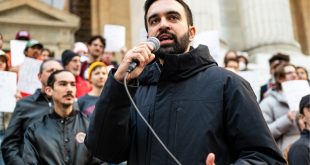 Between July 3rd and July 7th, 82 people were wounded and 16 killed by gunfire.
Between July 3rd and July 7th, 82 people were wounded and 16 killed by gunfire.
If you think I’m talking about violence in Iraq, you’re wrong. I’m talking about happenings in “Chiraq,” a new nickname for Chicago — my hometown. This violence is an unfortunate way of life for many Chicagoans.
Victims ranged from as young as a 14-year-old boy to a 64-year-old woman. Professionals and non-professionals alike were affected. Not even a candidate running for public office escaped the violence in Chicago that recent holiday weekend.
Lawless violence mirroring a certain country across the planet is how the Windy City earned the dubious new monicker of Chiraq. The numbers are beyond staggering, with nearly 1,200 shootings since the start of 2014.
Having grown up on the Chicago’s south side, I know first-hand about the problems plaguing Chicago, and that the solutions must go beyond the political gun control rhetoric.
To understand the problem, you must understand the culture and history of Chicago.
As a child born in the late 1980s, I perceived two notable things in my city: not many fathers at home and a lot of mothers addicted to crack cocaine and/or heroin. My mother was addicted to both.
My blessing was that, although my parents were not married, my father remained a part of my life and picked me up every weekend to spend time with him and his parents. This is where I learned how small businesses operate and how to legally earn an income.
I was very young when my mother checked herself into rehab to beat her addictions. She gave temporary custody rights to her mother while she recovered. My grandmother took on her five grandchildren while also working. But a car accident changed her life. She was forced to survive on disability and welfare while struggling to make ends meet and raise children she did not birth.
I lived two realities. One was where poverty was the norm and, in some instances, the lights and gas were off at the same time. At other times, I lived a life where money was never really much of an issue. This, however, is rare.
In many instances, a south and west side black family situation is poor, missing a father and largely missing a mother due to addiction. This leaves children open to the lure of gangs and the care and guidance they seem to offer.
I saw this often while growing up. The most significant example was the family across the street where the children received an upbringing similar to my own. Their mom was on drugs, and their grandmother cared for them. But there were so many of them that the grandmother could not contribute her full attention to each and every one while she worked a full-time job. As the kids got older, one joined a gang to find a sense of belonging. He robbed people and did other things gang members are known for doing.
One day, the boy got into an argument with someone. He resolved the argument by going into a barbershop where he shot and killed the other guy as he was getting his haircut. My former neighbor claimed he shot the guy because he wanted to prove he was a man despite not having an active father.
This is the reality that too many Chicagoans live — then and now.
People often ask me what can be done to stop the murders in Chicago. For one thing, black unemployment is double that of white unemployment. Since most of the shooting happens in black areas in Chicago, it seems logical there needs to be investment in community stabilization such as jobs, improved schools and access to opportunities. But it’s a two-way street. Residents must also make a conscious decision to abandon gang violence and (like my mother) get clean from drugs.
People are less likely to kill when they have something to live for. No law is going to be that effective.
Photo credit: Wikimedia Commons
 Project 21 member Gianno Caldwell is the founder and principal of Caldwell Strategic Consulting. Comments may be sent to Project21@nationalcenter.org.
Project 21 member Gianno Caldwell is the founder and principal of Caldwell Strategic Consulting. Comments may be sent to Project21@nationalcenter.org.
 CURE News and Clergy Blog News and Commentary for Christians
CURE News and Clergy Blog News and Commentary for Christians



